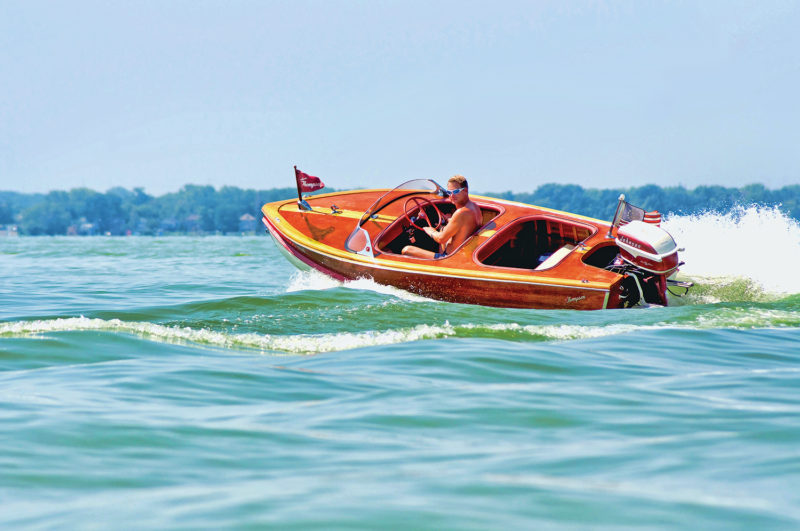 ROD MELOTTE PHOTO IMAGERY
ROD MELOTTE PHOTO IMAGERYThe author’s THOMMY, a 1955 Thompson Thomboy, is in original condition, with nothing anachronistic or out of place.
The term “Thompson Boat” conjures a picture of a white-painted lapstrake outboard boat with a stained and varnished mahogany deck and windshield frame. But these “iconic” Thompson watercraft were actually made for about a 15-year period in the company’s 92 years of operation, from the mid-1950s until the company dropped wooden boats from its product line in 1969. For much of the company’s history, cedar-strip hulls were the norm.
The Thomboy, one such boat, was introduced in late 1951 for the 1952 model year by Thompson Bros. Boat Mfg. Co. during the economic boom after the end of World War II. She was designed by Edward Thompson, one of six brothers who owned and operated the boat works. Thompson attended a naval architecture course as a young man and was a gifted designer.
A deluxe model at the time, the Thomboy came standard with the most factory-installed hardware and accessories the company offered. Wrap-around windshield, steering wheel and steering cables, navigation lights, bow and stern lifting rings and chocks were all standard. She was introduced that year as a 14-footer. In ’53, the company added a 16‘ version.
Thompson, with plants at Peshtigo, Wisconsin, and Cortland, New York, was the world’s largest builder of outboard boats. Peter Thompson started in the boatbuilding business in 1889 with Racine Hardware Mfg. Co., maker of Racine boats, and he later worked for Christopher Columbus Smith, founder of Chris-Craft, at Algonac, Michigan, before venturing out on his own with his brother Christ in 1904.
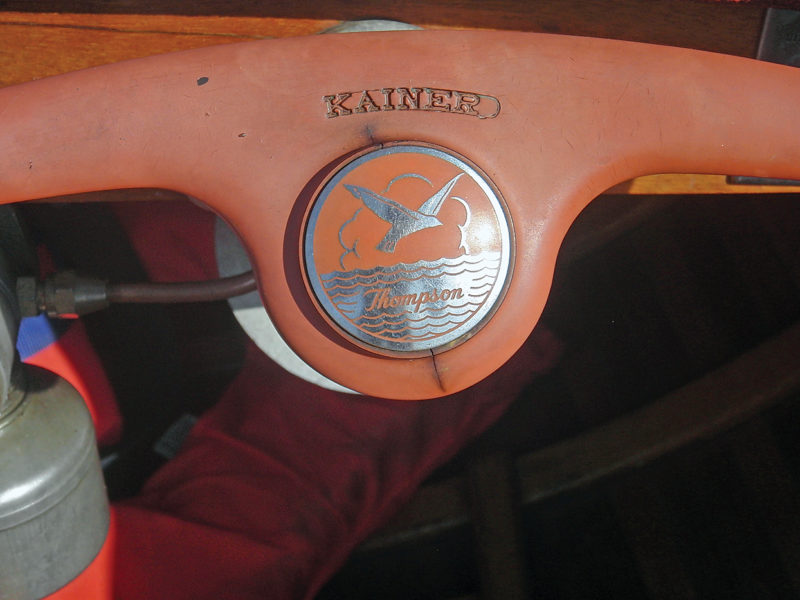 Andreas Jordahl Rhude
Andreas Jordahl RhudeOriginal details, like the intact Thompson logo at the center of the steering wheel, contribute to a vintage boat’s authenticity.
Strip-built hulls and carvel-planked boats were common at Thompson. Small rowboats and outboard motorboats were the focus, but Thompson also claimed in a 1944 promotional flyer that the company was the world’s largest builder of one-design sailboats. They did make sailboats for many classes, including the SeaGull, Lightning, Snipe, Olympic, Cub, Comet, and Red Head. Their claim at being the largest builder of sailboats, however, may have been nothing more than boldness and company puffery.
Thompson had 62 models in its product lineup the year the Thomboy was introduced. Around 5,000 boats were built each year at the Peshtigo boat works and 4,000 more were built in the branch factory at Cortland. At Peshtigo, the output reached the astounding figure of 8,000 boats in the factory’s peak year, or 152 boats every week, 30 boats each workday. The factory was abuzz with saws, planers, and molders, and several hundred workers were busy building fine wooden boats.
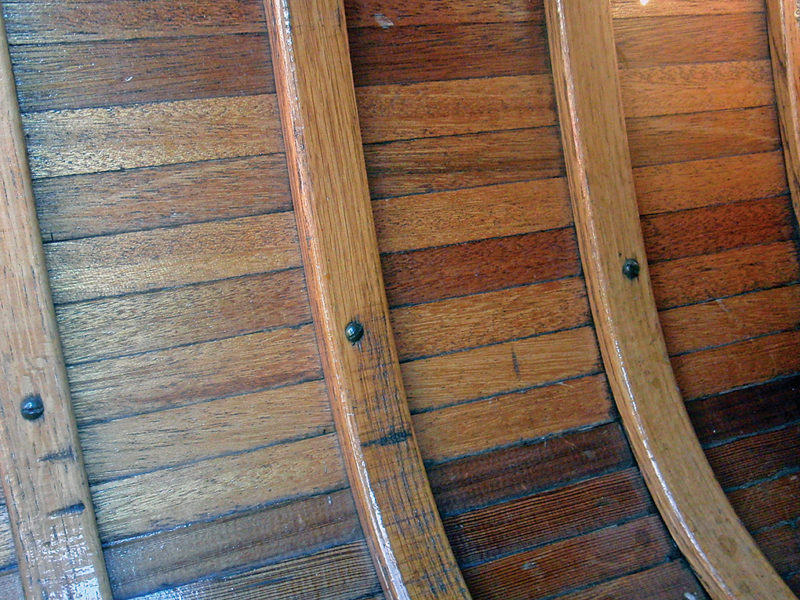 Andreas Jordahl Rhude
Andreas Jordahl RhudeLike many Thompsons, the Thomboy model was stripplanked over white oak frames, using western red cedar for the bottom and Philippine mahogany for the topsides.
The double-cockpit Thomboy runabout is strip-built with western red cedar below the spray rail and Philippine mahogany above the rail. The bead-and-cove strip planks are 3⁄8“ thick and 11⁄8“ wide. The boats were painted white below the spray rail and varnished above. The spray rail itself was a Thompson invention from the 1920s. The plywood decks and solid covering boards were stained a two-tone scheme, with dark and blond mahogany. This was a common finishing style among powerboat builders in the 1950s.
The 350-lb boat has a centerline length of 13‘2“ and beam of 55“. The structural framing components such as keel, keelson, stringers, and steam-bent frames and stem are all-heartwood white oak. The strip planks are screw-fastened to the frames. Unlike some boatbuilders, Thompson did not nail the adjacent planks to each other through the width. The company was so proud of the Thomboy that she graced the cover of the 1953 brochure. Interestingly, the Thomboy was made at the Peshtigo factory only.
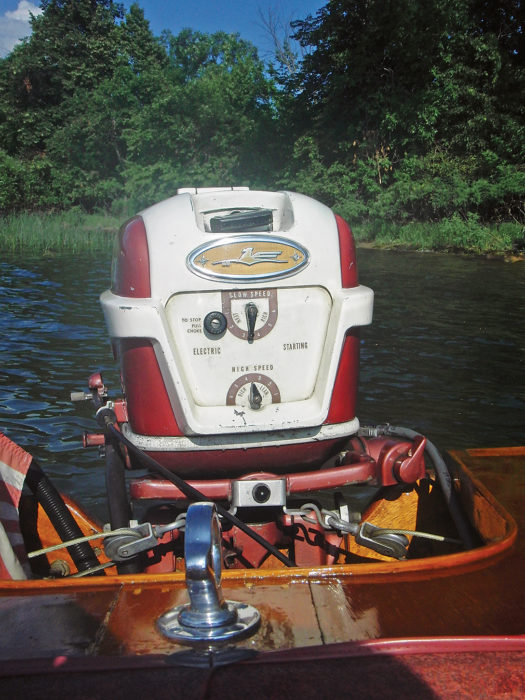 Andreas Jordahl Rhude
Andreas Jordahl RhudeA mid-1950s boat begs for an appropriate outboard, in this case a 35-hp Johnson from 1957.
My ’55 Thomboy, called THOMMY, is in original condition, with no changes other than maintenance varnish coats added to the original varnish and paint on the bottom. She has never been restored.
The boat is pushed by a 1957 Johnson 35-hp outboard motor. The motor has a unique after-market tilt-and-lift system called a Lec-O-Lift, a hydraulic device operated by a hand pump on the dashboard. It was made by Cass Machine Screw Company in Minneapolis, Minnesota.
The boat is very fun to drive. She is used sparingly and with great care, but by no means is she a “trailer queen.” She is easy to launch and retrieve single-handed. At 350 lbs, she is amazingly seaworthy for such a Lilliputian boat. When banking tightly on curves, your elbows nearly hit the water!
In 1955, Thompson offered, as an add-on, fiberglass sheathing of the hull bottom from spray rail to spray rail. That option, which added $42 to the price, was included on this boat at the time of manufacture.
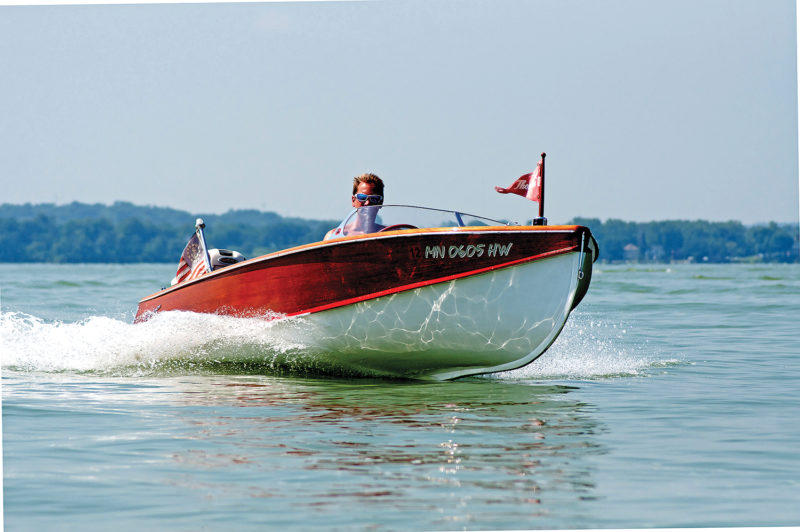 ROD MELOTTE PHOTO IMAGERY
ROD MELOTTE PHOTO IMAGERYThe 14’ Thomboy model is very small for a runabout, but its ease of handling makes her a joy to drive, and being close to the water accentuates the sense of speed.
I am the third caretaker of the boat. She was originally ordered as a gift by a mother for her son’s 16th birthday. The boat arrived at Rhinelander, Wisconsin, from the Peshtigo factory, all wrapped up and crated. She was lifted off the delivery rig and transferred to another truck and driven to the Pelican Lake Boat Shop, a dealership at nearby Pelican Lake. There, she was outfitted with a 1956 Evinrude Lark 30-hp outboard motor. She was the queen of the lake for many years. The young owner and his friends used her for pulling water-skiers and cruising. The second owner was a childhood buddy of the original owner. He was there when the boat was delivered by Thompson to Rhinelander in 1955. He obtained her in 1972. The first two owners took great care of the boat. She was wiped clean after each use and any water in the boat was carefully mopped up. Ultimately the motor was replaced with a 35-hp 1957 Johnson.
No one knows exactly how many of the speedy little runabouts were produced between 1952 and 1956, the four years the type was produced. It must have been a low number compared to other models. In 1953, the 14‘ Thomboy was priced at $725 and the 16-footer was $870, with standard accessories, not including the motor or the trailer. It was by far the most expensive model. The 15‘ Ranger canoe, the company’s lowest-priced boat, was only $168. THOMMY was ordered with the optional factory-upholstered seats, which added $125 more to the base price.
Today only 18 Thomboy boats are known to exist. There may be more hidden away, waiting to be discovered. I own two of the 18: THOMMY and another 1955 version that is in dire need of a major restoration. THOMMY the Thomboy is a multiple award-winner at several antique and classic boat shows.
The Thompson Thomboy is a fun, nimble watercraft. Her beautiful, streamlined hull handles rough water like a much bigger boat. This particular boat has brought joy to many people over the past 58 years. Cheers to another six decades of boating and enjoyment!
For information on Thompson runabouts, see www.thompsondockside.com. The author is the president of Thompson Antique & Classic Boat Rally, Inc.
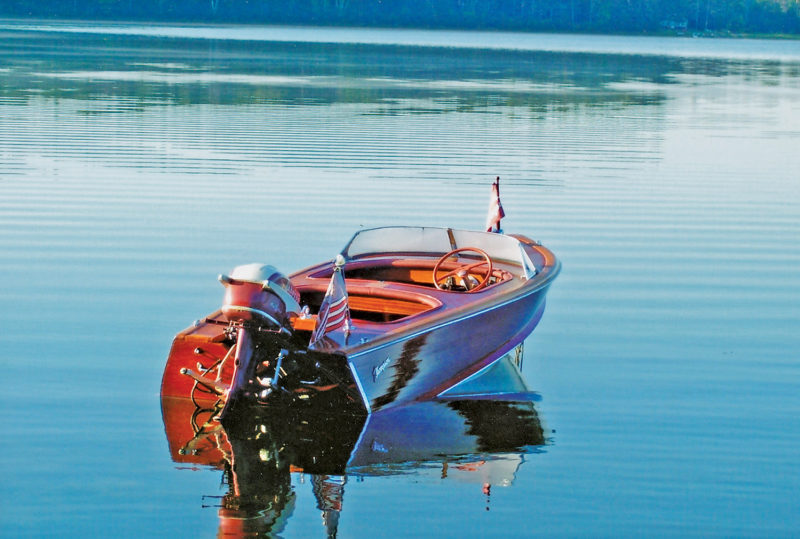 Andreas Jordahl Rhude
Andreas Jordahl RhudeAttentive care over the decades has kept THOMMY in pristine condition.
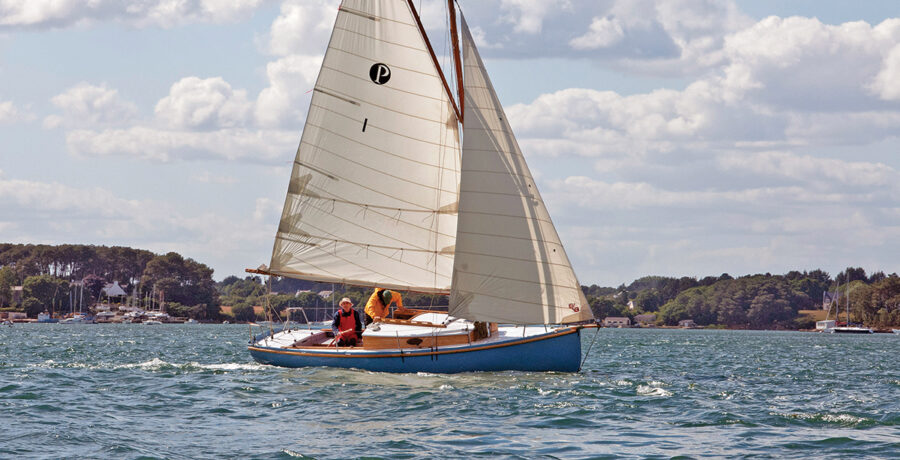
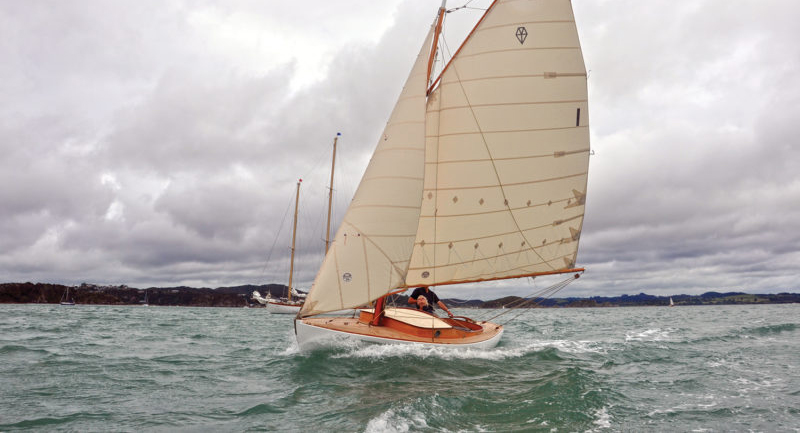
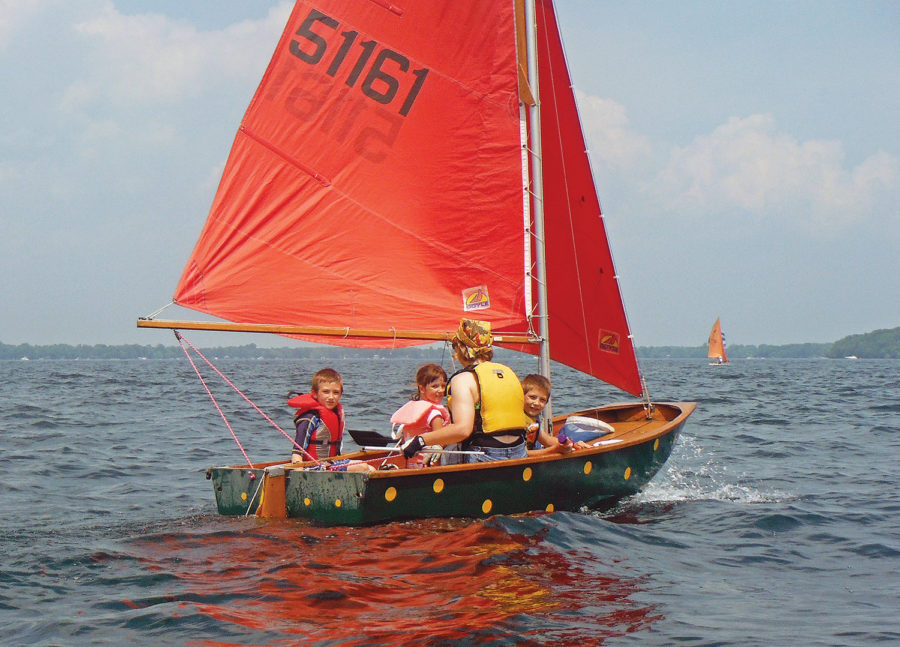
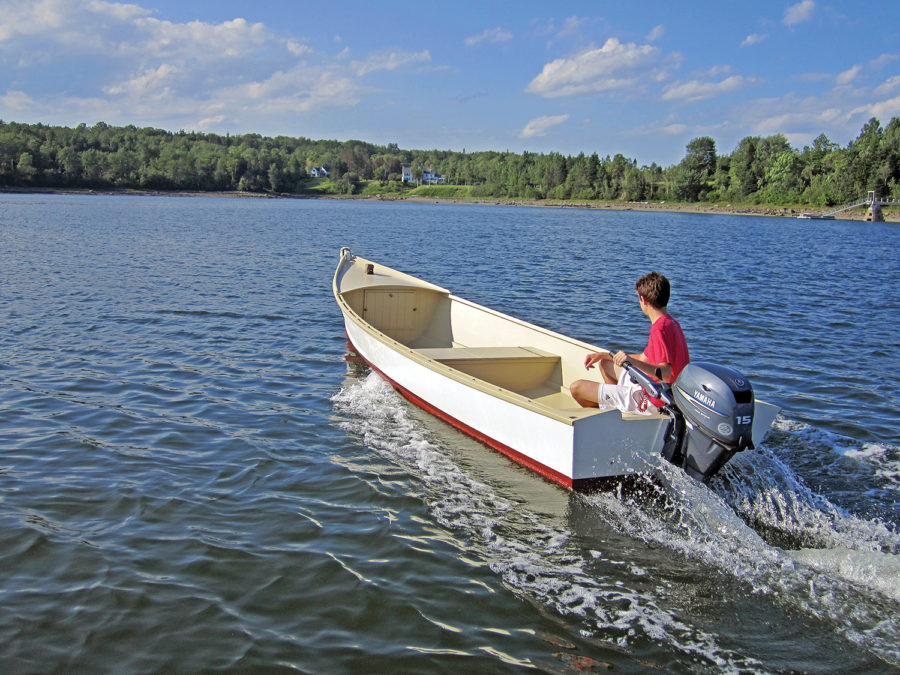
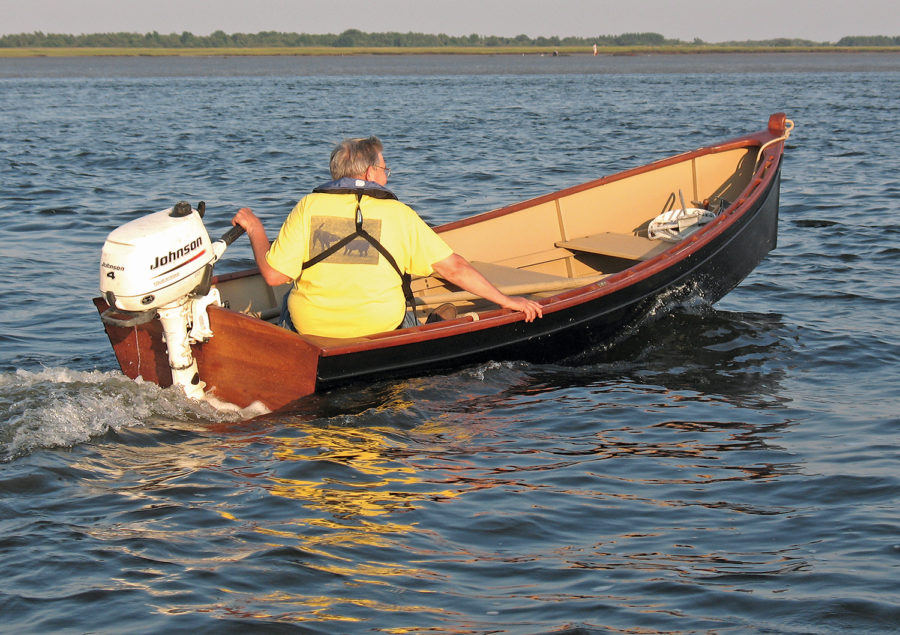
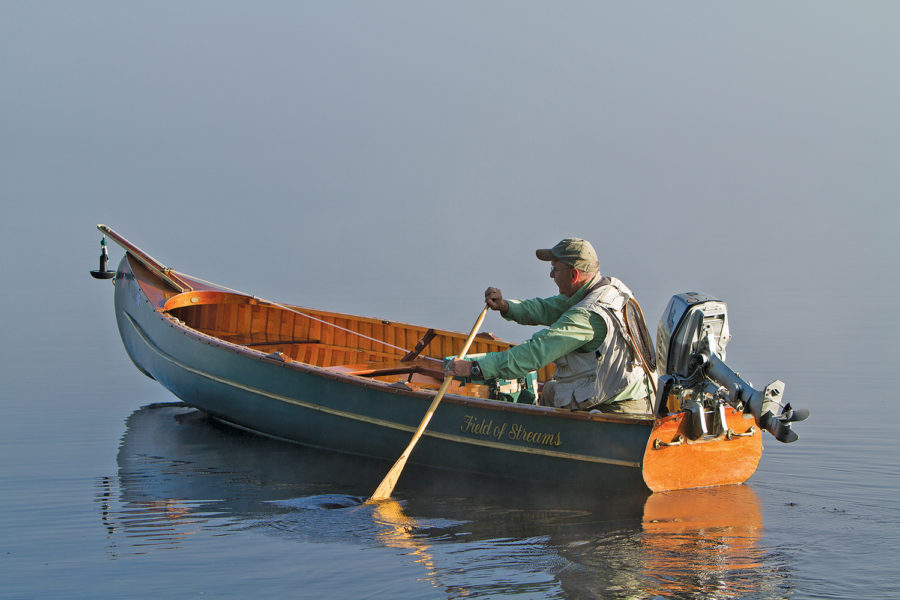
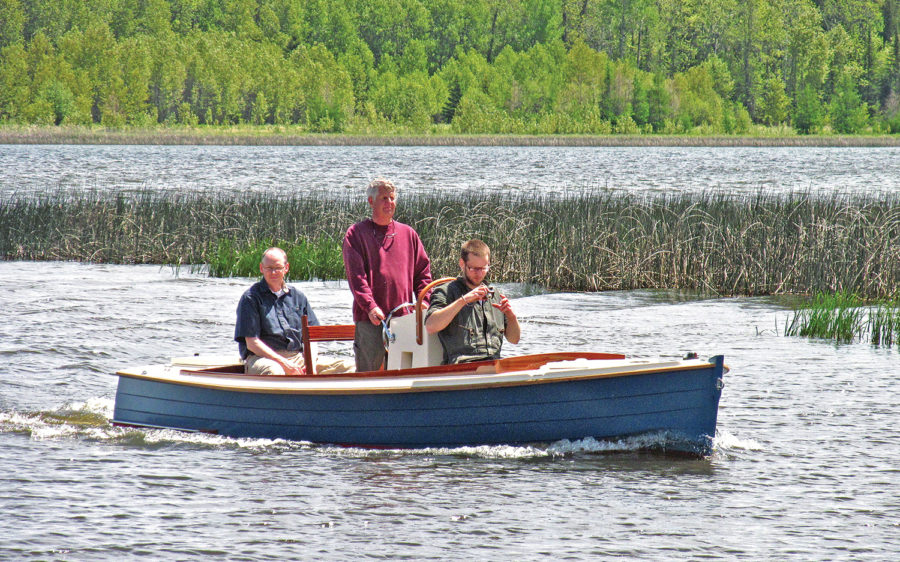
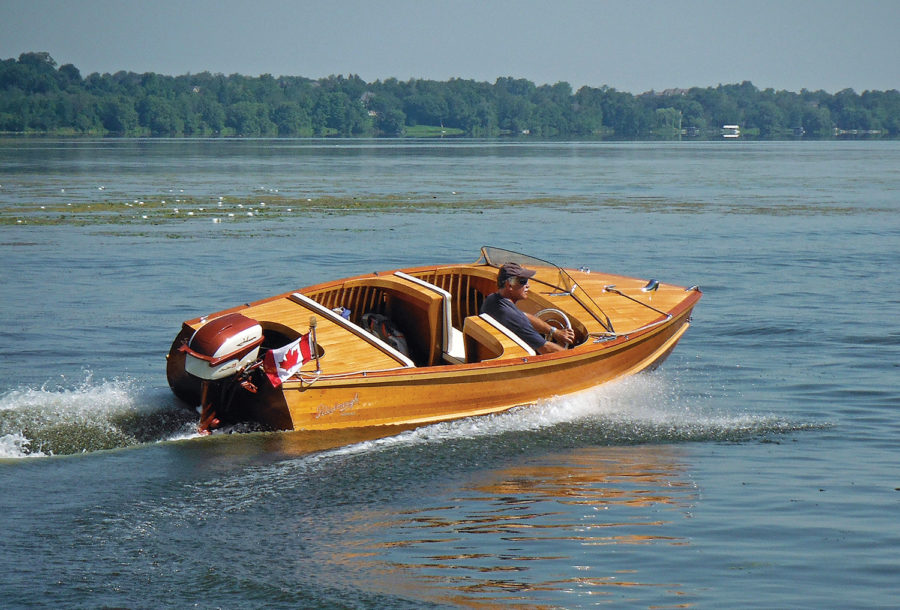
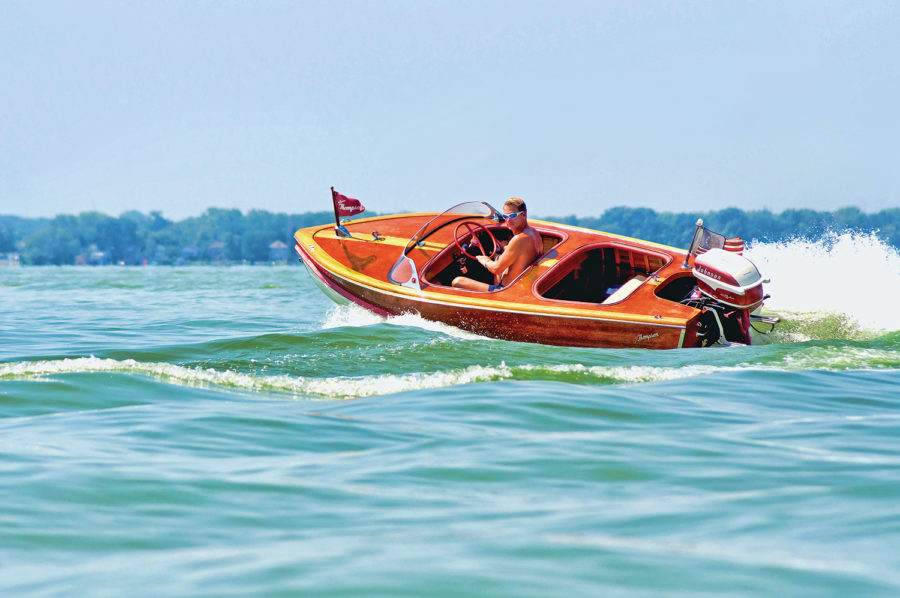
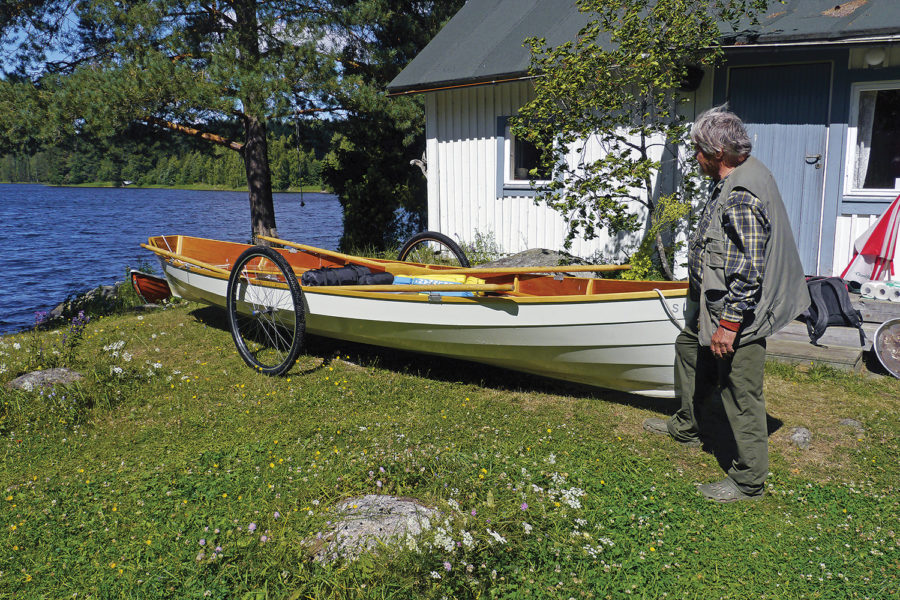
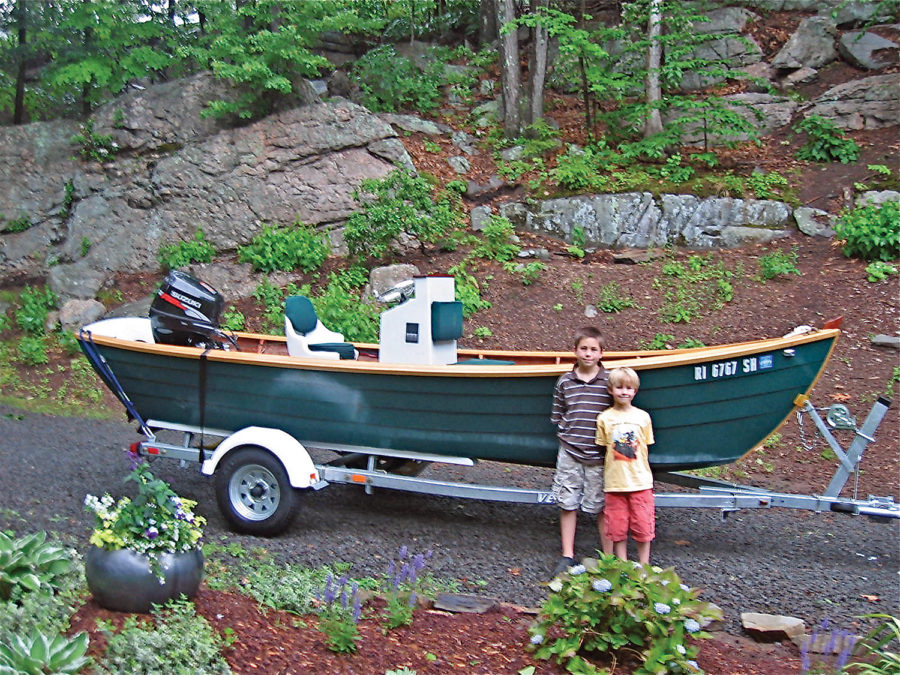
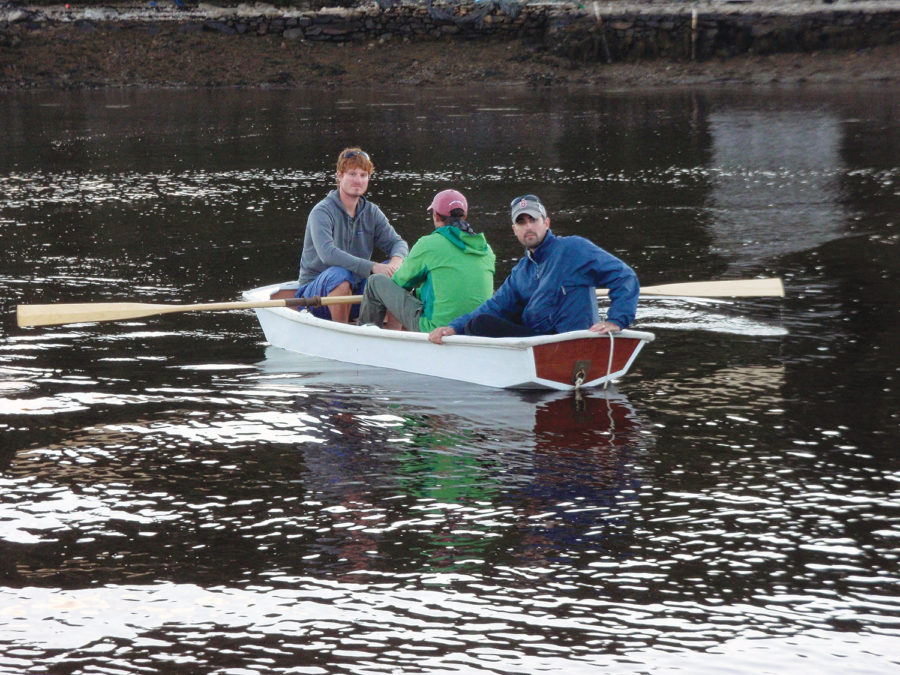
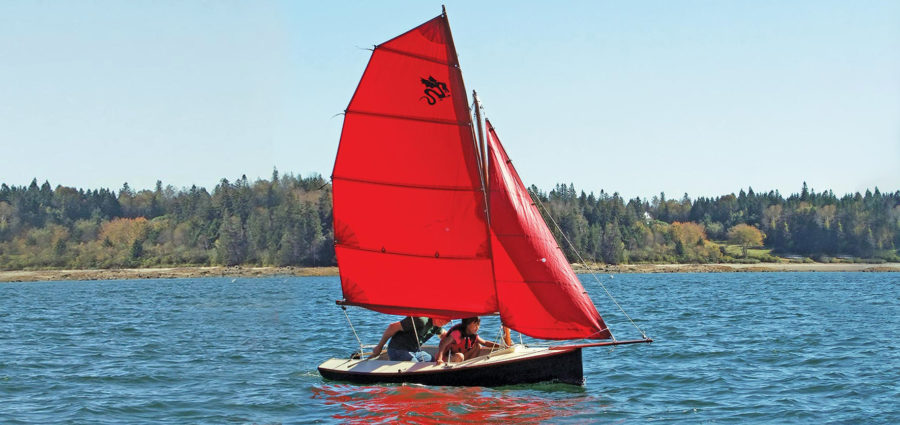
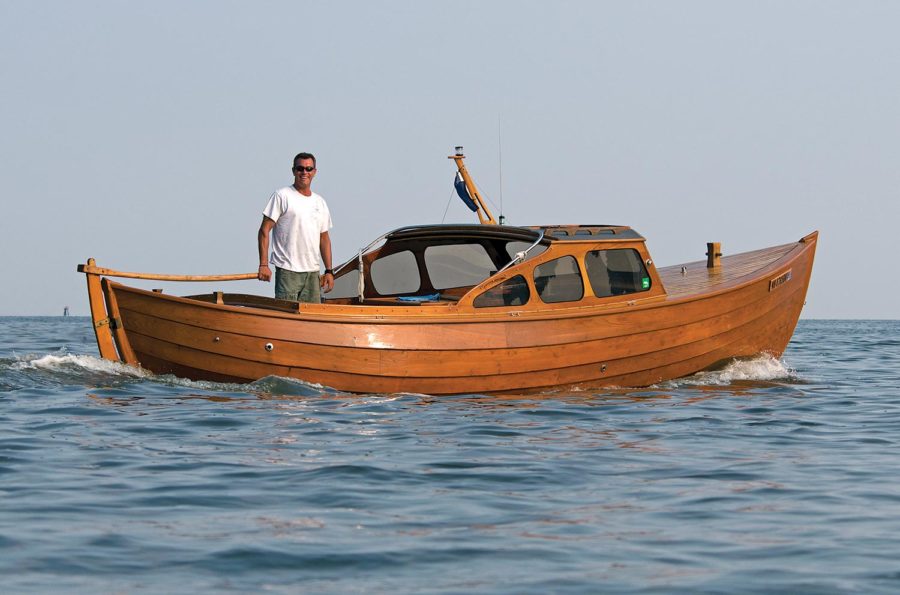
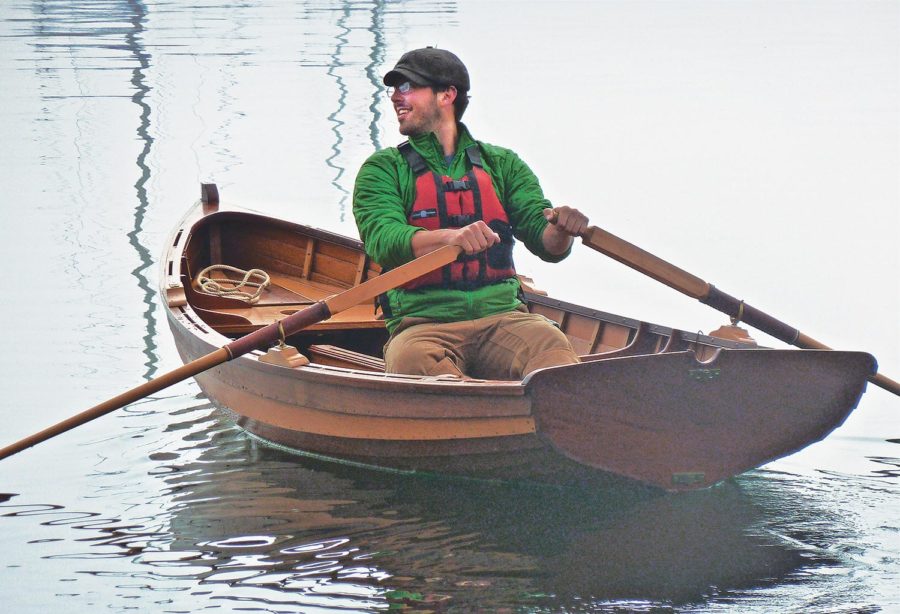
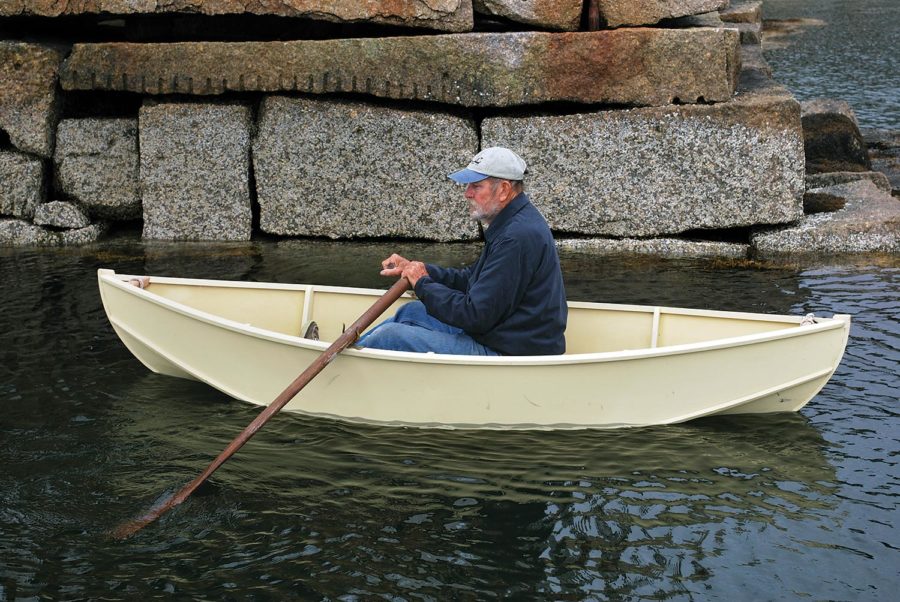
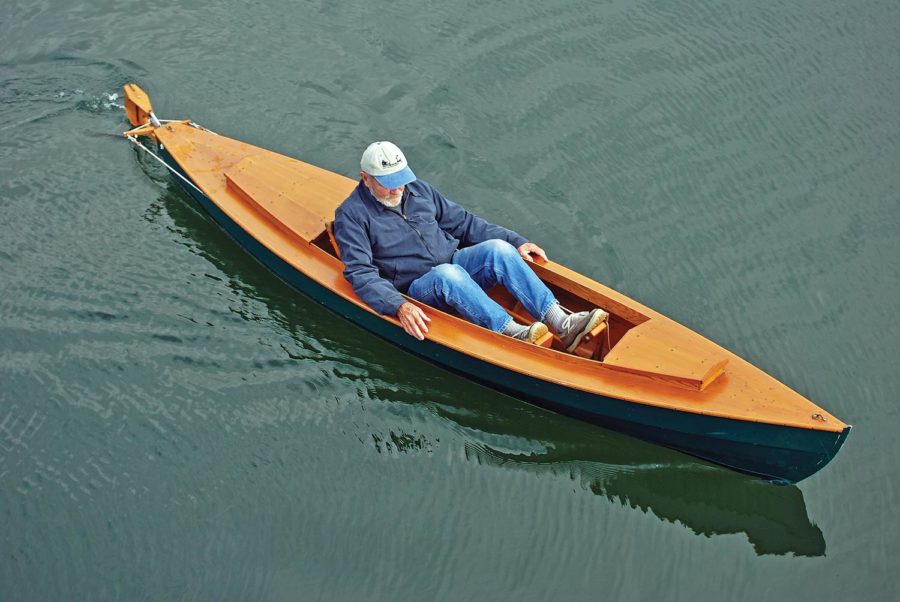
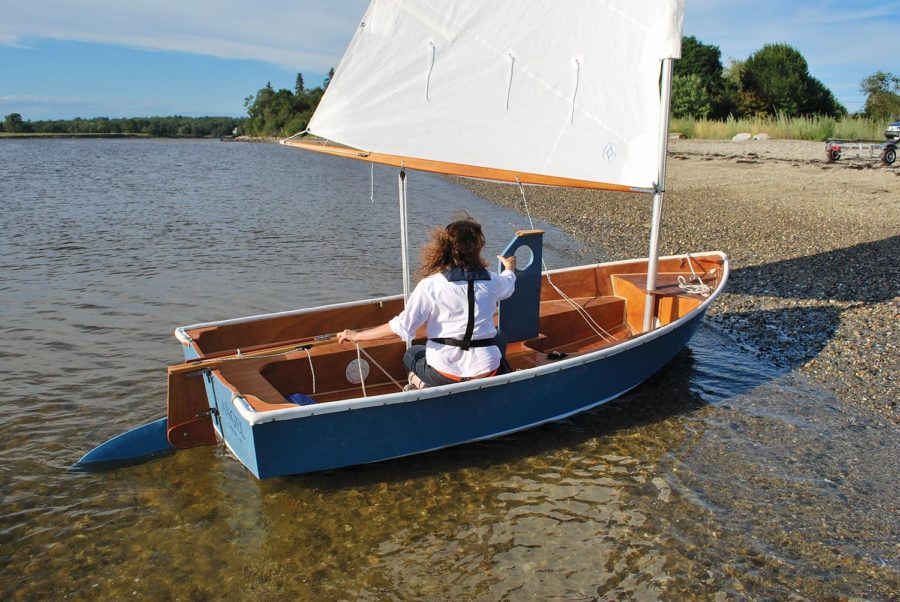
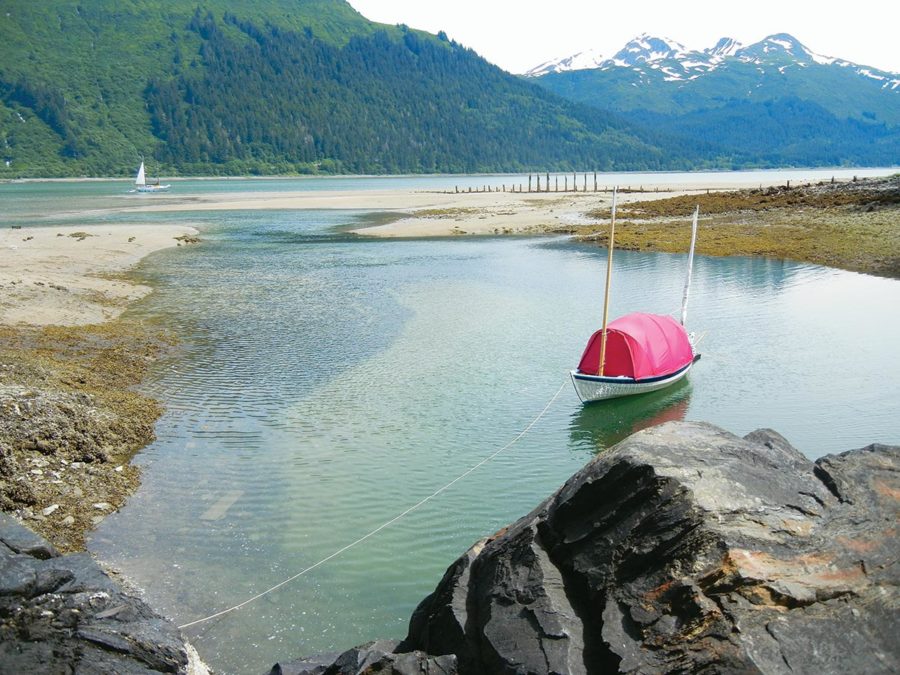
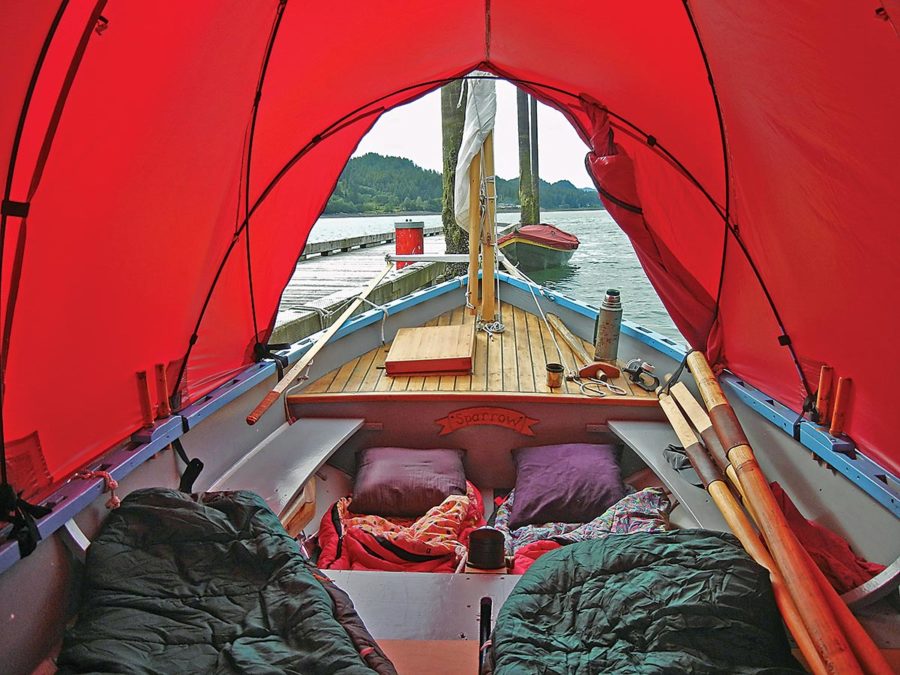
What a beauty! Was the boat ever docked in the water for a season, or was it taken out and trailered after every use? The aft sides are not fiberglassed. If kept in the water I would expect the wooden sides to deteriorate over time. Again, I am envious!
Jim Fischer
Hi
I like the boat is a trailer included also what would u consider for her
Peter